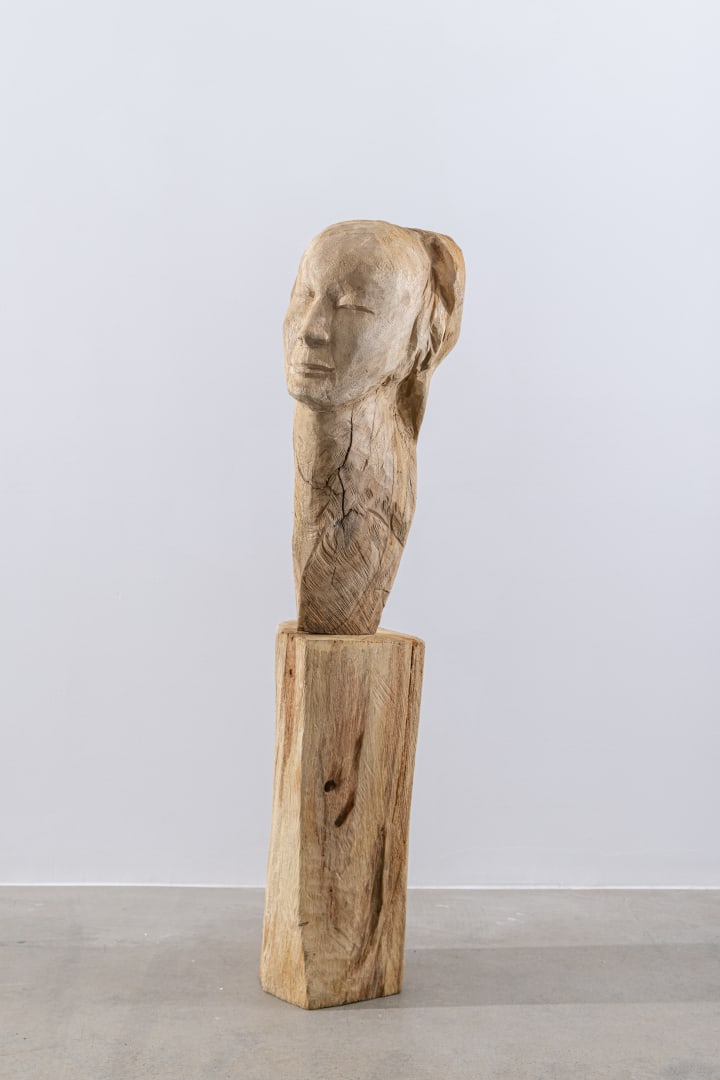Galerie Cécile Fakhoury - Abidjan is pleased to present Vestiges de la Mé, artist Jems Koko Bi's fourth solo exhibition in Abidjan.
Born in 1966 in Sinfra, in the central-west region of Côte d'Ivoire, Jems Koko Bi is a woodcutter - a jirignanzan. The Gouro ancestral heritage passed down to him is at the heart of his practice. At the heart of his personal and artistic history, Jems Koko Bi anchors his roots in the Mé forest, turning this multi-faceted place into an open-air workshop. Through the artist's subtle, inhabited gestures, this space sees the emergence of majestic woods that have, for one reason or another, ceased to exist. These forms evoke the powers of nature and the contradictions of humanity. Whether woodcarver, performer or poet, Jems Koko Bi is the messenger of the forest.
The artist's sometimes monumental works express his existential questioning as much as his relationship with life, being and becoming, for for him, trees exist, and in the hollow of his hands, they become. "If to live is to move, change space, meet and exchange, and to exist is to be, to occupy a space permanently and act, then a tree doesn't live, it exists. The tree puts an end to the journey of its body and makes its existence act by changing the course of time, creating seasons which, in turn, transform it."
The Mé forest - in the south-east of the country - is the common thread running through the exhibition. From this place, where a hundred trees felled and uprooted by human will had ceased to exist, Jems Koko Bi has chosen to open a dialogue between two kingdoms, between Man and the forest. He tells us a common story, that of a carved hand that becomes a tribute to a majestic tree once elevated in its verticality. It's the story of human souls who, through forced labor, have been obliged to leave a vegetal vestige behind. In the artist's eyes, this story is as synonymous with annihilation as it is with rebirth. Le train de l'âme, Soul train, recounts the suffering endured during the construction of rails that tore apart and denigrated souls. But at the heart of this pain is a boat, a symbol of freedom and hope for the future. These objects, carved from the same wood, mirror a conflicting but eternal relationship between two actors. For the forest and its wood are imperishable under the artist's hands, and the symbolism he confers on them goes well "beyond life".
Between verticality and horizontality, Jems Koko Bi acts as a mediator between two forces. By drawing on his own history and experience, the artist helps to convey a universal message in his work, and brings us a sensitive testimony to a plant material to which he gives new life.

